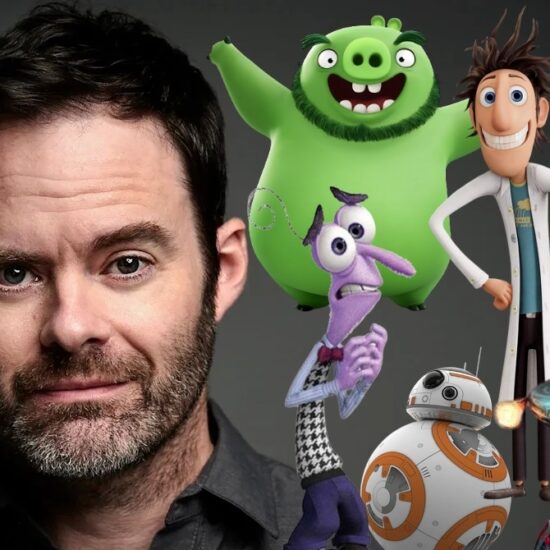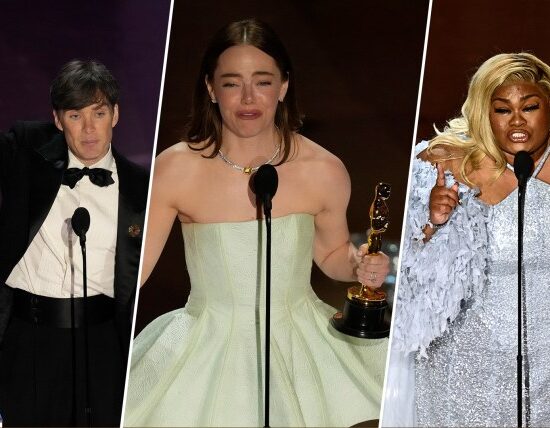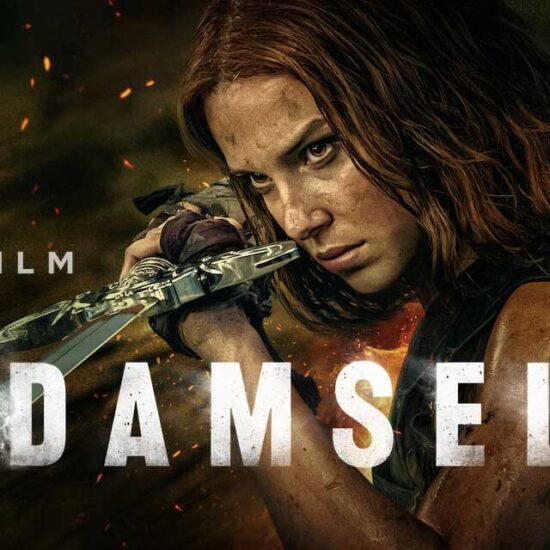
When PBS announced in 2017 that vaunted documentarian Ken Burns was hard at work on a four-part docuseries about Muhammad Ali, to debut in 2021, the news was greeted with much anticipation: one of the film world’s greats on the Greatest. The only hint of criticism came from some who thought Ali’s life was already well-trod territory. But four years later — in the wake of a racial reckoning in America that had the film industry, like so many others, reevaluating its commitment to diversity — the docu community had become considerably less welcoming of the project. With public chatter about a lack of representation and opportunity for people of color reaching a peak, a coalition of 140 documentary filmmakers sent an open letter to PBS in March 2021, slamming the choice of Burns to helm what was being positioned as the definitive doc on Ali.
“Your commitment to diversity at PBS is not borne out by the evidence,” the letter read, in part. “When you program a series on Muhammad Ali by Ken Burns, what opportunity is there for a series or even a one-off film to be told by a Black storyteller who may have a decidedly different view?”
It was one of the most high-profile shots in a war that’s been raging for several years now in creative fields from journalism and literature to documentary and narrative filmmaking: Who should be allowed to tell certain stories, and who shouldn’t?
Burns, for one, acknowledges that many communities have been underrepresented in major creative roles in the film world. In response to the letter back in 2021, he noted that PBS has instituted many initiatives to support filmmakers of color and had been supporting “a multiplicity of perspectives” for decades. But he also chafes at what he views as restrictive notions about storytelling.
“I don’t accept the idea that only people of a particular background can tell certain stories about the past,” says Burns, who has won Emmys for docuseries on baseball, America’s national parks, and the Civil War. “One of my favorite quotes in the whole world is Martin Luther King’s: ‘All people are caught in an inescapable network of mutuality, tied in a single garment of destiny.’ So, we all have to see the other and be seen by the other. For far too long, many people have not been seen or heard by the other. [But to say] ‘You are white, how could you possibly do it,’ that just violates everything Martin Luther King says. That’s a re-separation of people, which we don’t want.”
On the other side of the debate is Stanley Nelson, the award-winning filmmaker whose work frequently covers the Black experience, from the Freedom Riders to the Black Panthers to Miles Davis. Nelson, who is African American, argues that Burns’ Ali series by default is missing something.
“I don’t think that Ken Burns can understand what Muhammad Ali, on a visceral level, meant to the Black community,” says Nelson. “Can he understand it on an intellectual level? Yes. But what I’m trying to do as a filmmaker is to translate to film what the Black community felt about a Black man like Muhammad Ali or Miles Davis, and if you cannot understand what the Black community felt on a visceral level, then you can’t put it into the film.”
While Nelson concedes that “anybody can make any film that they want,” he stresses that, historically, the ratios have tilted heavily in favor of white filmmakers making films about Black people — and not the other way around. “I challenge you to name five films about white people that were done by a Black person,” Nelson says.
Still, many documentary filmmakers likely fall somewhere in the vast middle on this contentious issue, acknowledging that race and gender can play an important role in story- telling while resisting restrictions on the type of stories they can tackle themselves.
Oscar-winning director Roger Ross Williams (“The Apollo”) says he doesn’t want to be told he can’t direct a film about a white person. “If I tell a story about the African American experience, seeing it through my lens as an African American is going to be totally different than how a white person tells that story,” Ross Williams says. “It just is. But I make all kinds of films. I made “Life Animated,”and there wasn’t a Black person in that film. It was about a white, upper-middle-class family, and I can tell that story.”
Chinese American filmmaker Nanfu Wang is known for “Hooligan Sparrow,” “One Child Nation,” and “In the Same Breath,” all documentaries that take place in the Asian country of her birth. But most recently, Wang directed the six-part HBO docu “Mind Over Murder,” a true-crime series about the murder of a white grandmother in Nebraska and the six white people accused of killing her. She too resists the notion that filmmakers cannot tell stories outside their experience.
“I’m afraid [of] a consensus that only the people who belong to a community can tell the story of that community,” Wang says. “If you are only allowed to tell the story of your own culture or your own race, how limiting and suffocating that would be. It will really hurt the art form and the documentary industry. That will make more boring and homogenous art.”
This hot-button issue flared up two years ago, as the Black Lives Matter movement was gaining traction. At the time, explosive growth in documentary programming and funding was underway due to the steady influx of new streaming services. But behind closed doors, many in the nonfiction community questioned why only a small group of well-known, predominantly white docu filmmakers benefited.
AP
The topic exploded on social media when HBO announced the release date for “Tiger,” a two-part documentary about the biracial golfer Tiger Woods, in summer 2020, not long after the deaths of Ahmaud Arbery and George Floyd. The film was co-directed by two white men: Matt Heineman (“The First Wave”) and first-time director Matt Hamachek. Indian docu director and editor Geeta Gandbhir blasted the choices, stating that “the whole community needs to grapple with the issue of systemic racism in our community.”
The Oscar-winning documentarian Alex Gibney, who is white, executive-produced “Tiger,” and faced a wave of criticism — some of which he says was justified — for hiring Heineman and Hamachek.
“The ‘Tiger’-gate episode did raise my awareness of the lack of BIPOC representation in the film business and turbo- charged my determination to do more to promote diversity behind the camera,” Gibney says. “I just don’t think there should be a rigid matching between the sex, color, or religion of the filmmaker and the subject of the film. If we believe in the slogan ‘There is no them; there is only us,’ then we must trust in the curiosity and determination of the director, and his/her/their allies and co-workers, to find a path to cognitive empathy.”
Sam Pollard, a Black director of films including “MLK/ FBI,” also executive-produced “Tiger”and didn’t initially have a problem with the white directing duo. Though after the uproar, he reconsidered.
“I support filmmakers of all colors,” Pollard says. “So, when Gibney approached me about the Tiger Woods project at HBO and said Matt Heineman and Matt Hamachek were going to do the film, sure, they were white guys. But Hamachek was a real Tiger Woods fan, so to me, he was perfect for it. In retrospect, did I think maybe they should have had a person of color [directing]? Possibly. Probably.”
Dawn Porter, a Black filmmaker who directed 2020’s “John Lewis: Good Trouble,” says the problem is not just about the one-to-one relationship between the story and its teller. Also at issue, she says, is “who is getting access to resources.” She continues, “I think if you look closely at the concern [around ‘Tiger’], it was, ‘How did someone with no directing experience [Hamachek] get to be a co-director on a multi- part series at a very prestigious network?’ ”
“Do sex and race matter when it comes to directing a documentary? Yes,” Porter says. “But it’s the start of the question, not the end of the question. I don’t believe in color matching. However, I think that every filmmaker should ask themselves why they want to tell a particular story and be honest about what biases they might bring to that story.”

Jihad Rehab
Courtesy of Sundance Institute
The controversies around “Tiger” and “Muhammad Ali” have continued to reverberate this year: After the Sundance Film Festival premiere of Meg Smaker’s “Jihad Rehab,” which follows a group of former Guantanamo Bay detainees, the film was criticized for trying to humanize its subjects while still questioning whether they are criminals — a position that many people argued perpetuates harmful stereotypes. Some also took issue with Smaker, a white director, tackling the subject matter with a different gaze than someone from the region. Ultimately, two Sundance Institute employees resigned, and the organization wrote a public apology.
So what’s the solution to this seemingly intractable problem? According to some, looking at it holistically. Like all movies, documentaries are a team effort, notes Libby Geist, Words + Pictures executive vice president and head of documentaries. “It’s really important to surround yourself with a diverse group of people who can make sure that every T is crossed and that you’re getting the story right,” says Geist, who is white. “I’m talking about everyone from the archivists to producers and especially editors. The perspectives of all those people should be different. Otherwise, you really put yourself at risk for having blind spots that are easily exposed once they come out.”
Carrie Lozano, Sundance Institute’s Documentary Film Program director, works with filmmakers of all backgrounds and identities to make nuanced docus. “What we are really interested in is how a director is addressing ethical issues,” Lozano says. “How are they thinking about their positionality to the subject? And then how are they trying to bridge whatever gaps they might have?”
Wang is currently making a docu based in Cuba, despite not being of Cuban descent or being able to speak Spanish, and says the process involves “a lot of check-ins.” She explains, “I am constantly asking myself: ‘Are you falling into any stereotypes that you assumed? Do you have enough knowledge? Do you have enough understanding?’ One needs to be aware and constantly inviting more research or opinions from people who are deeply versed in the culture and the language, so you can see the things that you don’t see.”
Ross Williams and Emmy Award-winning producer Geoff Martz co-founded One Story Up in 2019 to address these issues from top to bottom — that is, starting with funding. “Part of the correction has to do with majority-Black-owned production companies getting to tell the stories,” says Martz, who is white. Ross Williams adds: “Buyers need to under- stand that going to a white production company just saying, ‘Go hire a Black director’ isn’t the solution. They need to support Black-owned businesses as much as they support the stories they want to put on their air.”
Gatekeeper diversity is key, according to documentary producer and the founder of Motto Pictures, Julie Goldman (“The Velvet Underground”): “We need more decision-making executives who are people of color. Often BIPOC filmmakers are only offered films about people of color. You’ll know the playing field is leveled when BIPOC filmmakers are also offered projects about white subjects and not always the other way around.”
This article first appeared in TruthSeekers, a collaboration between Variety and Rolling Stone.














